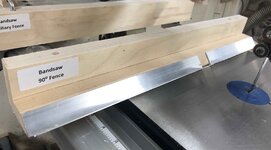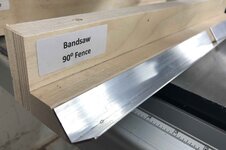SCjim
Member
I have to turn quite a few 2" to 3" x 12" long blocks of different hardwood down to about 1-1/2" diameter. Somewhere I think I seen a jig for an bandsaw that I could use to cut the edges off the blanks to save some time turning. I hope I am making myself clean. I do this in a disc sand by hand before I turn pen blanks but wood this size but wood like to "trim" the corners on these blocks before I chuck the up in my lathe.
Jim
Randleman, NC, USA
Jim
Randleman, NC, USA


